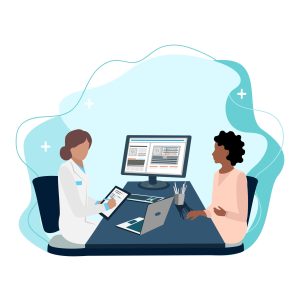Telehealth awareness reaches tipping point
pharmafile | April 2, 2009 | News story | Research and Development, Sales and Marketing | digi, healthcare
Analysts Datamonitor believe that telehealth has reached the tipping point in terms of awareness, with IBM following Intel's entrance into the market, prominent media coverage and a rise in the number of conferences highlighting the technology. However, despite the benefits that telehealth offers to both providers and patients, the question remains as to whether this awareness will lead to adoption.
The general public and most medical practitioners have never heard of telehealth, which is the use of information technology to monitor, diagnose and/or treat patients in a different physical location than the medical expert providing care. Even among providers that are familiar with electronic health records (EHR), telehealth is a foreign concept that, once explained, makes perfect sense to healthcare stakeholders, particularly patients. Despite the fact that the technology addresses multiple healthcare problems, including access to care, healthcare costs and quality of care, it has remained under the radar.
However, that is finally starting to change. As more high profile technology companies enter the space, more telehealth related articles are written in papers such as the New York Times and more conferences on telehealth are held, telehealth awareness has reached a tipping point. Datamonitor expects that the term telehealth will soon be as commonly used as EHR. However, while the adoption of telehealth will grow, it will not be widespread for a few more years.
Small groups of patients in North America and Europe are already using telehealth devices on a daily basis, keeping track of their health with the help of their providers. The technology allows patients with chronic diseases to remain in touch with providers in the comfort of their own homes rather than in a hospital or physician office, reducing travel time and costs for patients. Patients receive better care as health problems are caught earlier, treatments are adjusted accordingly and the emergency room is avoided. Meanwhile, providers are able to monitor more patients more often, only seeing patients that need to be seen in person in their office and managing the rest remotely.
This reduces wait times for those patients requiring an in-person visit with their clinician. Healthcare costs decrease as expensive emergency room visits are avoided, access issues are improved as providers are able to see more patients in the same amount of time, and quality of care improves as patients maintain a better quality of life and avoid hospital readmissions.
However, there have been a number of barriers to telehealth adoption. A lack of reimbursement for providing telehealth services has been the largest roadblock for doctors. Physicians, pressed with their own limited budgets and resources, cannot afford to spend time treating patients remotely without payment, when they could be using that time to see paying patients in person. However, this hurdle is slowly coming down. Private and public payers are beginning to realise the advantages of telehealth. For instance, Medicare reimburses for telehealth under particular circumstances and some private payers in certain geographies are also paying providers to use telehealth. Datamonitor expects this trend to continue. Additionally, the lack of technical standards, broadband access in rural areas and licensure issues across state/national lines are barriers that are currently being addressed.
What is most promising, however, is that physician resistance to new technology, which is the most difficult barrier to adoption, is also falling by the way side. With the emphasis on healthcare technology in the US stimulus plan, even the most technophobic US providers are realising that healthcare IT is not going away and they will have to start using technology whether they want to or not. The financial incentives for EHRs and other healthcare technology may be the final incentive that providers need to adopt IT.
While prominent technology companies, including Microsoft and Google, have made forays into healthcare, a number are jumping into the telehealth market specifically, raising eyebrows both within the healthcare community as well as outside of it. In late 2008, Intel launched its Health Guide, a personal health system delivered on the vendor's own laptop. Intel's entrance created a storm of publicity around the telehealth market, in many ways legitimising the field and driving the industry forward. On the heels of Intel's announcement, IBM released its own press release in early 2009 stating that it was partnering with Google Health, a personal health record (PHR) platform. IBM is creating software for telehealth devices, allowing the devices to exchange data with Google Health. Microsoft's Health Vault, another PHR platform, showed early recognition of the telehealth market's potential, highlighting its ability to connect with devices from its launch. In this particular respect, Google Health has now caught up to Health Vault.
Also in early 2009, telehealth received a boost of publicity through an article in The New York Times. The article described how patients use telehealth in their homes and how the technology has improved their healthcare experience. Such high profile coverage reflects the increased attention on telehealth and increases public awareness.
Another indicator of telehealth's growing presence is the number of industry conferences that are now related to the technology. In the past, the American Telemedicine Association's (ATA) annual conference was the only venue for telehealth solutions. Not only has ATA's membership and conference attendance increased dramatically, but ATA has also added a mid-year conference to delve into specific aspects of telehealth. In addition to ATA, other conferences such as the Home Telehealth and Remote Patient Monitoring Conference, which took place for the first time this year in Philadelphia, are now also focusing on telehealth.
Furthermore, conferences that never discussed telehealth in the past are now devoting a number of sessions specifically to telehealth. HP's Health and Life Science Symposium is one such conference. This increase in conference activity is also a sign of the growing interest in telehealth. However, HIMSS, the major healthcare IT trade show, is the one place telehealth still needs to build a presence. Datamonitor would like to see a much higher number of telehealth vendors at HIMSS. While there are a handful of telehealth companies that do exhibit at HIMSS, the percentage is so small that telehealth is pushed to the fringe. When telehealth has a bigger presence at HIMSS, it will finally be fully accepted into the healthcare IT community.
In conclusion, Datamonitor believes that telehealth has now reached the tipping point in terms of awareness. However, the tipping point in terms of adoption is still many years down the road. For adoption to increase, not only do reimbursement issues need to be resolved, but telehealth technology needs to improve both in terms of reliability and ease of use, particularly as it expands into other patient populations. Nevertheless, telehealth has now reached general awareness, which is one of the biggest hurdles to adoption. By continuing to increase awareness, building upon the momentum of the past few months, improving the technology and increasing adoption, telehealth can become a regular part of everyday healthcare for everyone.
Related Content

COVID-19 is pushing healthcare firms to embrace digital transformation, reports suggest
The COVID-19 pandemic forced industries across the board to evolve or die with regard to …

The Royal College of Obstetricians and Gynaecologists (RCOG) call for action over shortages of hormone replacement therapy (HRT)
The Royal College of Obstetricians and Gynaecologists (RCOG) have called for action from government and …
Four perspectives from life sciences companies on multichannel engagement
By 2020, 70% of HCPs are expected to be digital natives, whose experiences with mobile, …








